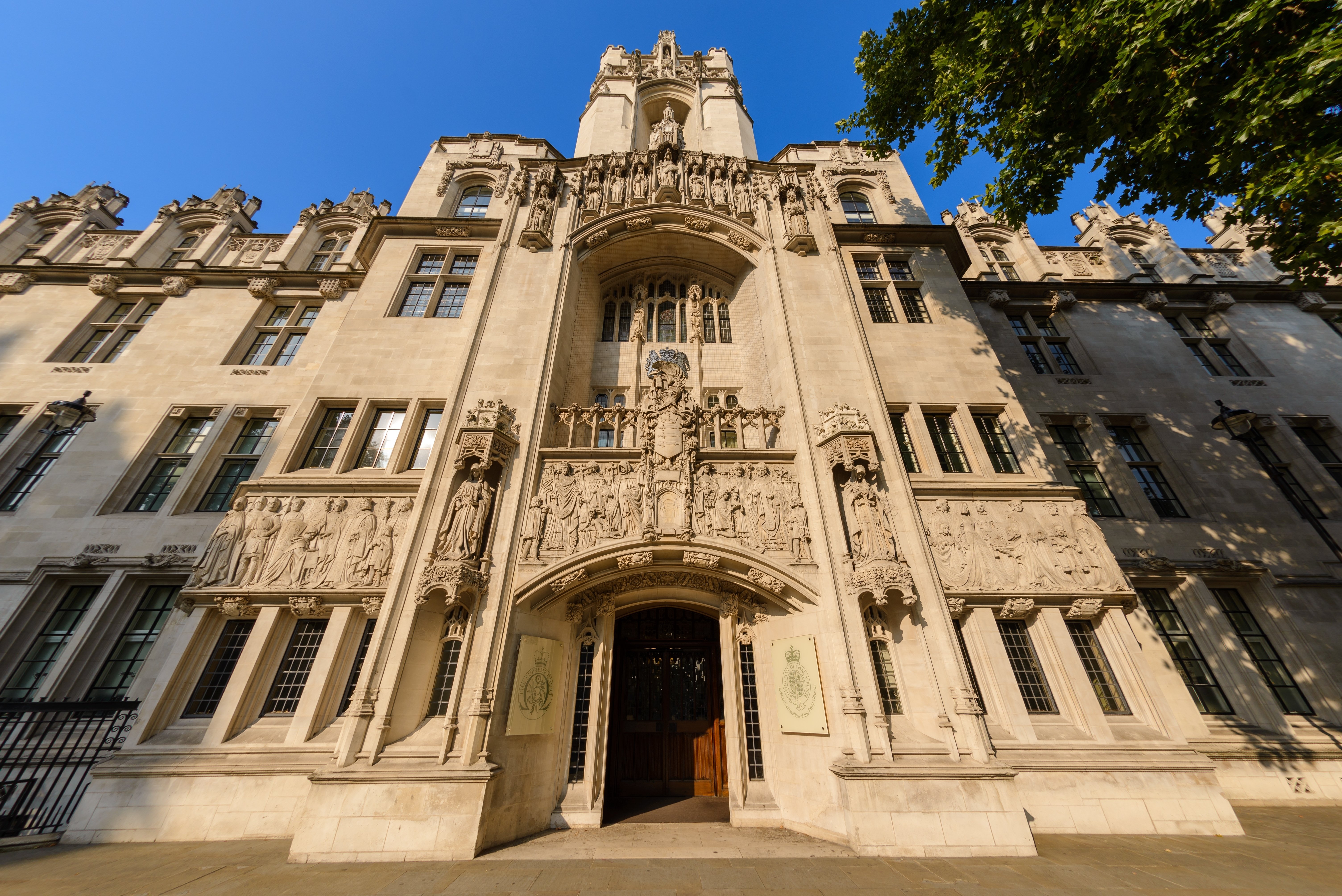In For Women Scotland Ltd v The Scottish Ministers [2025] UKSC 16, the Supreme Court considered the correct interpretation of the terms 'sex', 'man' and 'woman' in the Equality Act 2010 (EA 2010) in light of s 9 Gender Recognition Act 2004 (GRA 2004). The central question was whether the EA 2010 treats a trans woman with a gender recognition certificate (GRC) as a woman for all purposes within the scope of its provisions or whether, when the EA 2010 speaks of a 'woman' and 'sex', it is referring to a biological woman and biological sex.
Background
The Scottish Ministers issued statutory guidance under the Gender Representation on Public Boards (Scotland) Act 2018 (ASP 2018), which defined 'woman' as including a person with the protected characteristic of gender reassignment (within the meaning of s 7 EA 2010) if, and only if, the person is living as a woman and is proposing to undergo, is undergoing or has undergone a process (or part of a process) for the purpose of becoming female. For Women Scotland Ltd, the appellant, challenged this definition and the associated statutory guidance by way of an application for judicial review. The Court of Session, Inner House found the definition to be unlawful as it encroached on an area of law reserved to the UK Parliament, namely equal opportunities, and therefore fell outside the legislative competence of the Scottish Parliament.
The Scottish Ministers responded by issuing revised statutory guidance in 2022 which stated that the term 'woman' under the ASP 2018 had the meaning set out in ss 11 and 212(1) EA 2010. The guidance went on to state, however, that a person with a GRC recognising their gender as female would also be considered a woman for the purposes of the ASP 2018 by virtue of s 9(1) GRA 2004. For s 9(1) see Gender reassignment, Q&A here. The appellant petitioned for judicial review, challenging this revised statutory guidance, arguing that it was unlawful because it was based on an error of law and that the definition of 'woman' under the EA 2010 referred to biological sex.
The Court of Session, Outer House dismissed the petition, finding that the revised guidance was lawful. The Outer House held that 'sex' in the EA 2010 was not confined to biological sex but included the acquired sex of those with a GRC.
The appellant's subsequent appeal to the Court of Session, Inner House was dismissed. The Inner House agreed that the GRA 2004 was a far-reaching enactment which created a mechanism by which a person could change his or her legal sex. It stated that s 9(1), (2) and (3), read together, meant that a person with a GRC acquired the opposite gender for all purposes unless there was a specific exception in the GRA 2004 or unless the terms and context of a subsequent enactment required a different interpretation. Going on to examine the terms 'sex', 'man' and 'woman' under the EA 2010, the Inner House held that those terms could indeed have a wider meaning in accordance with the GRA 2004, so that a trans woman with a GRC had the protected characteristics of both sex (ie their acquired gender) and gender reassignment under ss 11 and 7 EA 2010 respectively (see Q&A here). The provisions of the GRA 2004 and EA 2010 could be interpreted consistently for the purposes of both statutes if such terms were given this wider meaning; only those provisions of the EA 2010 relating to pregnancy and maternity might require a more narrow interpretation of 'woman' as meaning 'biological woman'. It concluded that the revised guidance was lawful because a person with a GRC recognising their gender as female was, under this analysis, a 'woman' for the purposes of s 11. The appellant appealed to the Supreme Court.
Decision
The Supreme Court unanimously allowed the appeal. Delivering the leading judgment, Lord Hodge, Lady Rose and Lady Simler held that the terms 'sex', 'man' and 'woman' in the EA 2010 refer to biological sex. This means that holding a GRC does not affect a person's sex for the purposes of the EA 2010.
The court considered that s 9 GRA 2004 was key to the issues raised in the appeal. S 9(1) sets out that where a full GRC is issued to a person, that person's gender becomes for all purposes their acquired gender. S 9(2) confirms that s 9(1) does not affect things done, or events occurring, before issue of the GRC but operates for the interpretation of enactments passed and instruments made before the GRC was issued. S 9(3) provides that s 9(1) is subject to any provision made by the GRA 2004 or any other enactment or subordinate legislation. As the court summarised, s 9(1) applies unless disapplied by s 9(3). When read together, s 9(1), (2) and (3) have the effect that those with a GRC become the acquired gender (or 'certificated sex') for all purposes unless the GRA 2004 provides for a specific exception or the terms and context of an enactment negate the effect of s 9(1).
Despite the EA 2010 failing to expressly address the effect of s 9(1), and notwithstanding the absence of the word 'biological' from the EA 2010 definition of 'sex', the court did not consider this, by itself, to be indicative of Parliament's intention for 'sex' to mean 'certificated sex'. The question was whether the EA 2010 contained provisions indicating that the biological meaning of sex was plainly intended and/or that a 'certificated sex' meaning rendered the provisions incoherent or absurd. This necessitated a close analysis of the EA 2010 to identify whether there were indicators within it which demonstrated that s 9(3) applied and therefore displaced the rule in s 9(1).
The court held that interpreting 'sex' as 'certificated sex' would cut across the definitions of 'man' and 'woman', and therefore the protected characteristic of sex, in an incoherent way. As a matter of ordinary language, the EA 2010 provisions relating to sex, pregnancy and maternity discrimination, as well as the protection from health and safety risks specifically affecting women, could only be interpreted as referring to biological sex. It also rejected the suggestion that these words could bear a variable meaning such that, in the provisions relating to pregnancy and maternity, the EA 2010 referred to biological sex only, while elsewhere it also referred to certificated sex. By its nature, the court considered a variable definition neither clear, constant nor predictable.
In considering other core provisions of the EA 2010, the court recognised gender reassignment and sex as distinct and separate bases for discrimination and inequality. Interpreting 'sex' as extending to certificated sex pursuant to s 9(1) would create two sub-groups within those sharing the protected characteristic of gender reassignment, providing trans people in possession of a GRC with greater rights than those without one. The court could see no good reason why Parliament should have intended this potential difference in treatment when in fact s 7 EA 2010 is broader in its protection of trans people than s 9(1), which is limited to only those with a full GRC. Moreover, service-providers, employers and other organisations would face difficulty in applying equality law given the lack of obvious means of distinguishing between the two sub-groups and the confidentiality of a GRC (since the duty-bearer cannot ask whether the GRC has been obtained). This interpretation would also weaken the protections afforded to those with the protected characteristic of sexual orientation (see Sexual orientation, Q&A here), for example by interfering with their ability to have lesbian-only spaces and associations.
Further, the court found that there were other EA 2010 provisions whose proper functioning required a biological interpretation of 'sex', including those directed at maintaining the availability of separate or single-sex spaces (eg changing rooms), single-sex services, communal accommodation and others. Similar incoherence and impracticability would arise in the operation of provisions relating to single-sex characteristic associations and charities, women's fair participation in sport, the operation of the public sector equality duty (see Discrimination: Overview, Q&A here) and the armed forces.
It was held that a biological sex interpretation would not have the effect of disadvantaging or removing important protections under the EA 2010 for trans people, whether with or without a GRC, in respect of their rights to claim direct discrimination, harassment and indirect discrimination. It is well-established that direct discrimination 'because of' a protected characteristic (s 13 EA 2010) encompasses not only cases where the complainant has the protected characteristic in question but also where the discriminator perceives that the complainant has the characteristic. For example, a trans woman who is treated less favourably 'because of' being perceived as a woman could claim for direct sex discrimination on that basis.
The court concluded that its examination of the language of the EA 2010 demonstrates that the words 'sex', 'woman' and 'man' in ss 11 and 212(1) mean (and were always intended to mean) biological sex, biological woman and biological man, but this conclusion did not remove or diminish the important protections available under the EA 2010 for trans people. It was satisfied that the EA 2010 made provision within the meaning of s 9(3) that disapplied the rule in s 9(1).
Implications
It is important to remember that at the heart of this appeal is the interplay between s 9(1), (2) and (3) GRA 2004 and the EA 2010. In situations where those pieces of legislation overlap, employers must navigate the practical aspects of ensuring compliance with the EA 2010 as clarified by the Supreme Court. In their blog 'A matter of biology: the meaning of man and woman in today's decision of For Women Scotland Ltd v The Scottish Ministers', Cloisters barristers Imogen Brown and Hana Abas describe the decision as 'profound'. Under the EA 2010, they continue, 'all transgender individuals (whether or not they have a Gender Recognition Certificate) must be treated as their birth sex under the Equality Act 2010'. While the decision 'reduces uncertainty for entities subject to the obligations the Equality Act 2010 imposes', one question that arises is 'whether the contention that transgender individuals are adequately protected as the law stands will prove to be correct'.
In any event, the legal and practical consequences of the decision are complex and wide-ranging, with further litigation in this area likely. What is immediately clear is that, as a result of the judgment, 'All employers and entities would be wise to review and/or revise the policies they currently have in place'. In this respect, the Equality and Human Rights Commission has said (EHRC Statement) that it will take the decision into account in its ongoing work including the development of its 'revised Code of Practice which, subject to ministerial approval, is expected to be laid before Parliament before the summer recess'.
For more information on sex discrimination generally, see Sex, and for gender reassignment discrimination, see Gender reassignment.
First published on the Employment News Service on 25 April 2025.
Want to view more content like this? Or view our previous features? Sign up for a Free Trial to our service.
To view our previous blogs, please visit the blog home page.




